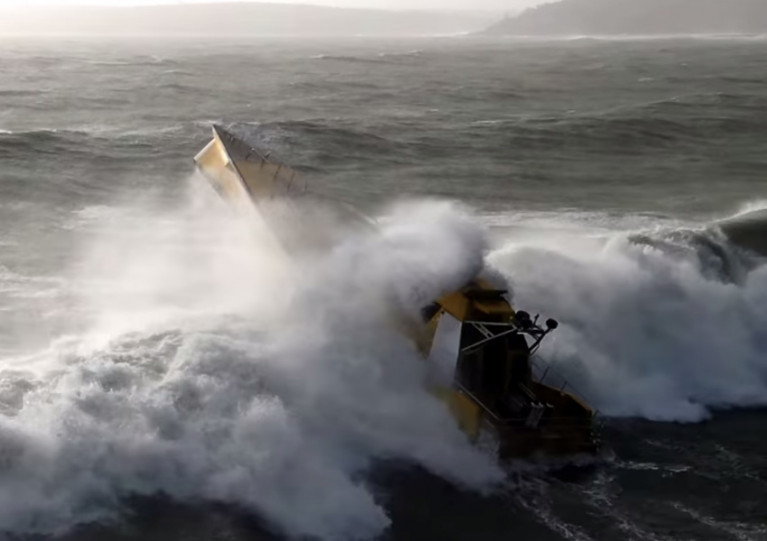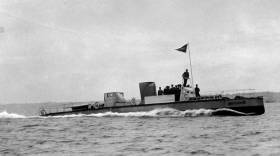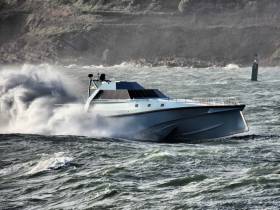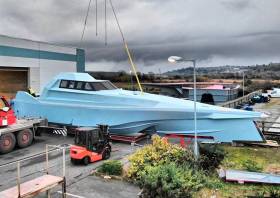Displaying items by tag: Thunder Child II
Ireland's Fastest Powerboats Berth at Dun Laoghaire Marina
The arrival of Thunderchild II into Dun Laoghaire Harbour on Friday gave rise to speculation that a Dublin powerboat record attempt might be on the cards this weekend, given the 80–mph Zero Dark RIB was also berthed at the town marina.
Both vessels have set separate Cork Fastnet Cork speed UIM record times, and it is understood both have an appetite to set further record times off the Irish coast. The latest time was set last month, as Afloat reported here.
On this occasion, though, it transpires the Frank Kowalski skippered Thunderchild was simply on her way home to Cork Harbour from a voyage to Iceland and had merely stopped off for a refuel at Ireland's biggest marina.
However, John Ryan's Zero Dark RIB may yet have her eye on some UIM record times while based in the capital's waters.
The high-speed RIB has been out Dublin Bay clocking up some impressive speeds over the past two weekends.
More news on any record attempt as we have it.
 Thunderchild II off Cork Photo: Bob Bateman
Thunderchild II off Cork Photo: Bob Bateman
Thunder Child II Nears Greenland Coast in Arctic Adventure
Continuing their Arctic adventures, the crew of Safehaven Marine’s Thunder Child II followed Saturday’s 200nm cruise from Reykjavik to Ísafjörður in Iceland’s far north-west with a 400nm crossing of the Denmark Strait to East Greenland.
“We managed to get some 30nm from the Blosseville Coast, but running through very heavy fog for 40 miles and navigating through drift ice with zero visibility was extremely challenging and somewhat dangerous,” the team commented on social media.
“During the journey we found some wonderful icebergs off the Greenland waters and managed to fly the drone capturing some epic footage.”
As previously reported on Afloat.ie, the state-of-the-art powerboat set a new record time (verification pending) for the crossing from Ireland to Iceland in under 32 hours at the weekend.
Safehaven Marine reports that Thunder Child II and crew have successfully achieved their world record attempt from Ireland to Iceland.
The XSV20’s sub-32-hour time over the 1,500km from Killybegs to Reykjavík is pending ratification by UIM but is already vindication of its state-of-the-art powerboat’s wave-piercing design.
The crew report today (Friday 9 July) that “the hardest leg was the North Atlantic where we were punching a head sea swell all the way”.
Tomorrow, Saturday 10 July, Thunder Child II will continue its voyage north, above the Arctic Circle, to the ultimate destination of East Greenland.
Safehaven Marine’s Frank Kowalski and the crew of Thunder Child II are setting off in the early hours tomorrow morning (Thursday 8 July) for their attempt to set a new speed record from Ireland to Iceland.
“It’s always a bit of a gamble with the weather, especially over a distance of 1,500 kilometres,” the team commented on social media. “We might get better if we wait, but then again we might not!”
“However as the forecast is also fair above the Arctic Circle and East Greenland, our ultimate destination, and sea ice is now clear south of Scoresby Sund, [so] we decided to have a go.”
 The Thunder Child II crew, from left: engineer Robert Guzik, navigator Ciaran Monks, skipper Frank Kowalski, drone pilot Carl Randalls and Mary Power, logistics
The Thunder Child II crew, from left: engineer Robert Guzik, navigator Ciaran Monks, skipper Frank Kowalski, drone pilot Carl Randalls and Mary Power, logistics
Thunder Child II’s record-seeking ambitions were first mooted nearly three years ago, months before the launch of the XSV20 powerboat with its specially designed wave-piercing hull.
Follow the team on their voyage from 3am tomorrow at the dedicated SafeTrx tracking page HERE.
Safehaven Marine has released video of sea trials during a recent unseasonal storm which produced some pretty rough conditions at the entrance to Cork Harbour.
The Cork-based performance boatbuilders managed to capture some impressive footage of Thunder Child II and the new Barracuda SV125 on the day.
The Barracuda was commissioned for Future Defence in the USA and is designed for search and rescue as well as coastal patrol duties.
The vessel is fully self-righting, able to recover if capsized by a large breaking sea and capable of all-weather operations.
Its design features a deep ‘V’ hull with midships and transom deadrise of 24 degrees and a wave-piercing bow of 65 degrees giving excellent head sea capabilities.
A wide 4m beam ensures high levels of stability in big beam seas and excellent dynamic stability in following seas. A twin chine arrangement ensures a very dry ride.
Powered by a pair of Caterpillar C8.7 650hp engines, ZF 380 two speed gearboxes with SD3L surface drive propulsion by France Helices, the Barracuda has a maximum speed of 43 knots and a cruise speed of 32 knots at 70% of max power.
At this speed each engine is consuming just 69 litres per hour, giving a 600nm range from the vessel’s long-range fuel tanks.
For much more on the new Barracuda, see the Safehaven Marine website HERE.
Safehaven Marine put Thunder Child II to the test against the might of Storm Brendan yesterday — showing just how well the wave-piercing powerboat can handle the roughest elements at sea.
Sea trials for the XSV20 design began a year ago but had taken a backseat to the successful Cork boatbuilder’s commissions for port and harbour vessels — an enviable situation which nevertheless saw the planned North Atlantic Challenge that had been scheduled for last summer moved to this year.
Thunder Child II has been developed in mind of setting a new west-east transatlantic world record, and a proposed route has been plotted from St John’s in Newfoundland, via Greenland and Iceland, to Killybegs on Ireland’s West Coast.
Here's an epic slow motion sequence of Thunder Child II hit by a couple of massive waves during Storm Brendan today, beautifully shows the power and majesty of the sea. #StormBrendan @captainbob76 @MaryP972 A nice video follows @LarryCpix @mbymagazine @urlofcork @AfloatMagazine pic.twitter.com/tYZwIU0QVc
— Safehaven Marine (@SafehavenMarine) January 13, 2020
Record Seeker Thunder Child II Stirs Memories of the Legendary Turbinia From Parsons of Birr
There was something about the look of the reverse stem of Safehaven Marine’s new 70ft Transatlantic record-seeker Thunder Child II in Afloat.ie this week which stirred a hidden memory of ships and speed writes W M Nixon. And then it clicked. Suddenly, we were transported back to the heady days of the 1890s, a Golden Age of engine invention. The memory was of Charles A Parsons of Birr, and his new steam turbine powered speedster Turbinia.
But apart from both having a reverse stem, the only other shared features of Turbinia and Thunder Child II are their quest for speed, and their links to Ireland. Thunder Child’s shape is a fascinating, inventive and exhaustively tank-tested mixture of mono-hull and catamaran, while Turbinia by contrast is a hundred feet of miniature naval destroyer, long and skinny with quite heavy displacement.
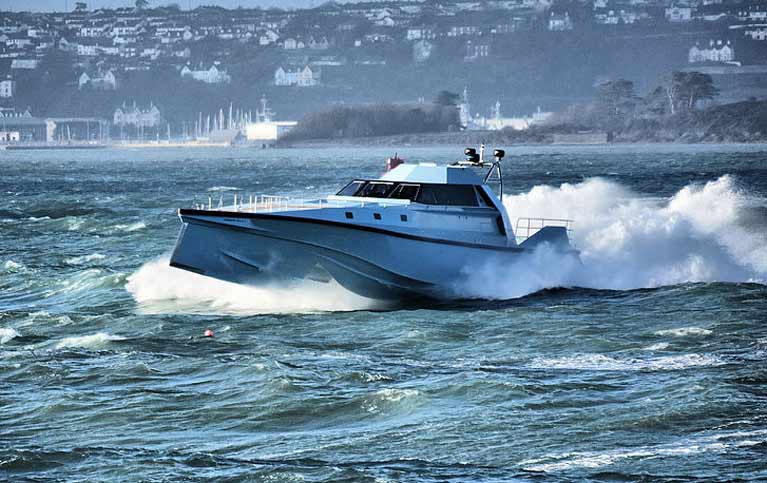 Thunder Child II – “a fascinating, inventive and exhaustively tank-tested mixture of mono-hull and catamaran” Photo Safehaven Marine
Thunder Child II – “a fascinating, inventive and exhaustively tank-tested mixture of mono-hull and catamaran” Photo Safehaven Marine
Her creator was Charles A Parsons (1854-1931). The Parsons of Birr Castle were a very inventive and engineering-minded family, as anyone who has seen the mighty telescope at the castle will know. So although young Charles was educated at home, his tutors included some noted engineers, and after he’d dutifully done his time at Trinity College Dublin, he took the unusual step – for someone from his background - of signing up as an apprentice in what was then the engineering invention hotbed of the northeast of Englan
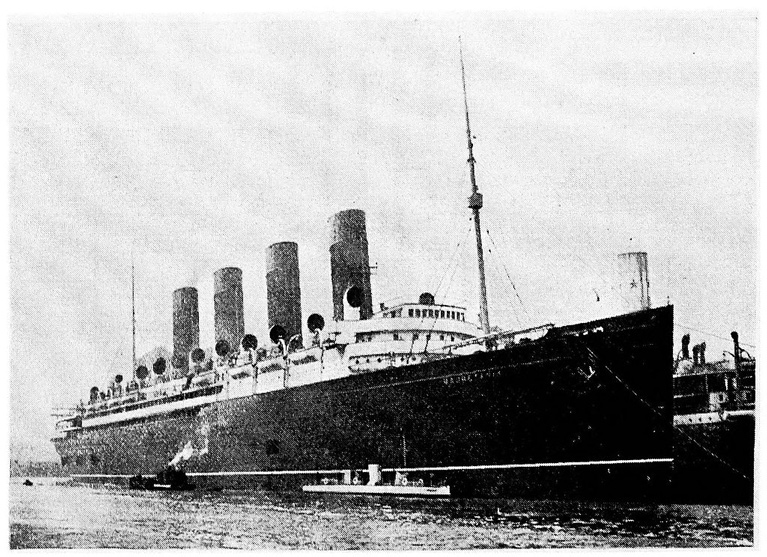 The commercial breakthrough – the tiny Turbinia alongside the new ocean liner Mauretania in 1906. Although the Royal Navy had started to use steam turbine power soon after Turbinia’s dramatic debut at the Fleet Review of 1897, it took a few years before Mauretania appeared as the first steam turbine-powered commercial vessel.
The commercial breakthrough – the tiny Turbinia alongside the new ocean liner Mauretania in 1906. Although the Royal Navy had started to use steam turbine power soon after Turbinia’s dramatic debut at the Fleet Review of 1897, it took a few years before Mauretania appeared as the first steam turbine-powered commercial vessel.
In due course in 1889, he and five partners established C A Parsons & Co to develop and demonstrate his invention of the compound steam turbine. From this emerged the Parsons Marine Steam Turbine Company in Newcastle, which commissioned the building of the Turbinia in 1894. It took several experiments with propeller designs and configurations before they felt they were getting the best out of the little ship, but it was time well spent, for in 1897 the Diamond Jubilee of Queen Victoria saw the cream of the Royal Navy (a huge fleet in those days) assembled off Spithead for a formal review. The Turbinia – uninvited - came up and down through their serried ranks at a speed of 34 knots, much faster than any other ship of the time. The future of steam turbine marine power was assured.
These days, you can see the restored hull of the Turbinia in the Discovery Museum in Newcastle-on-Tyne, while her engine is in the Science Museum in London. As to where Thunder Child II will be in 125 years’ time – well, that’s anyone’s guess.
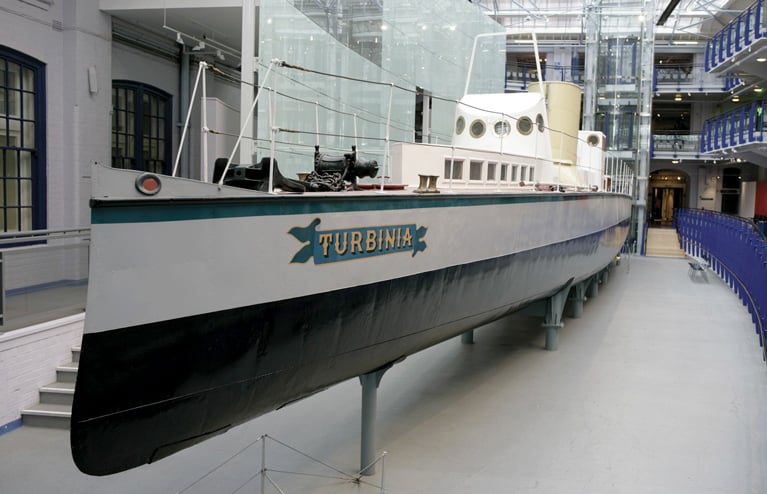 Turbinia’s hull on display in the Discovery Museum in Newcastle-on-Tyne
Turbinia’s hull on display in the Discovery Museum in Newcastle-on-Tyne
Safehaven Marine’s Thunder Child II Powerboat Finally Hits The Water In Cork
This past weekend saw the successful launch in Cork of Thunder Child II, the next-generation wave-piercing monohull from Safehaven Marine designed to set a new powerboat world record.
Crafted at Safehaven’s boatyard in Youghal, the XSV20 cruised into East Ferry Marina in Cork Harbour yesterday after its first few hours on the water.
And it’s expected it will soon begin rigorous sea trials ahead of Safehaven MD Frank Kowalski’s attempt to set a ‘northern route’ speed record across the Atlantic later this year.
Thunder Child II Taking Shape At Safehaven Marine
Thunder Child II is finally taking shape at Cork-based performance boatbuilders Safehaven Marine, with “another couple of more months” go before launch for sea trials in the New Year.
As previously noted on Afoat.ie, the XSV20 design developed over the past year crosses a wave-piercing monohull with a catamaran and is optimised for cutting through 4,000km of Atlantic sea with the aim of setting a new powerboat world record.
Safehaven Marine — with its design HQ in Cork Harbour and boatbuilding yard in Youghal — is also busy with its pilot boat commissions, the latest coming from Puerto Rico.
So finally after a year in development 'Thunder Child II' takes her shape. She looks pretty cool. Just another couple of more months work till her launch. pic.twitter.com/vXGnqKioKj
— Safehaven Marine (@SafehavenMarine) November 23, 2018


























